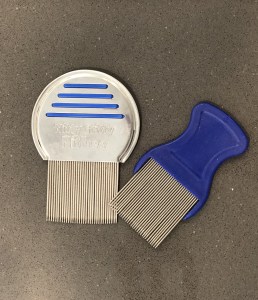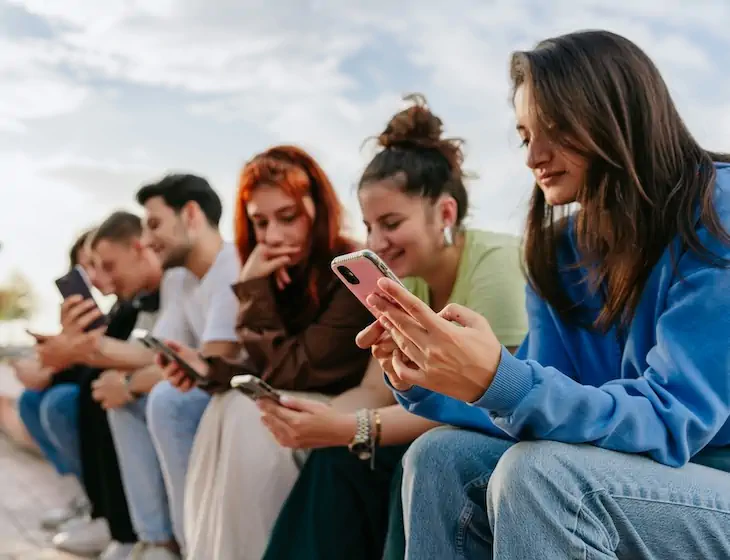Your child has head lice, now what?
As a parent, I can tell you that lice is one of the most annoying aspects of having children. Yes, disease and death are a parent’s worst nightmare, but lice comes in close behind. It is a lot of work to get rid of and can be an expensive venture if you are buying a lot of products or using a lice removal service. I wish this blog post was going to offer you magic solutions, but unfortunately it’s not. What I will do is discuss what lice is and isn’t and give you my best advice.
What is head lice?
The head louse, or Pediculus humanus capitis is a parasite found in human hair close to the scalp and feeds off of human blood. A lice infestation, or infection, causes itching and can also cause the sensation of something moving through the hair. The most common areas that will itch are at the base of the neck and behind the ears. While this is irritating, it is not dangerous and lice does not spread disease.
Lice is spread by direct contact, so it is very common in close quarters like school settings, sleepovers or camps, and among members of the same household. Because lice DO NOT jump or fly, they are only spread by crawling from person to person when infected hair touches another. This can also happen from clothing, hats, hairbrushes, sheets and other hair supplies or bedding, although it is less common. Lice can live up to 2 days off of a human host so be sure to keep hairbrushes clean and remind children not to share clothing or hats with others. You can not get lice from your pets.
Getting head lice does not mean you or your child are dirty. In fact, lice cling more easily to clean hair v. oily or dirty hair. Furthermore, lice cling to certain hair types more easily than others. Because it cannot cling to smooth surfaces, it won’t stay on items like headphone wires.
How is lice treated?
Once an adult louse sets up shop, they begin to lay eggs and can lay up to 10 eggs per day. The eggs, or nits, attach to the hair shaft so they can be hard to remove. The shell will remain on the hair even after the egg hatches. They will hatch after about 8-9 days and those eggs will become adults in about 2 weeks. So you can see that catching it early is really important!
Fine toothed combs used for removing lice and nits
The first step is recognizing that your child has lice. It can be difficult since the nits can look like dandruff and the adults move quickly out of the way. If your child is itchy and you think you see lice, use a fine toothed comb through the hair to see if any lice or nits come out. Don’t forget to look behind the ears and at the base of the neck. For some good photos of what head lice might look like, click here.
Once you confirm that your child has lice, it’s time to decide how you want to approach treatment. Lice is becoming more and more resistant to medication. Furthermore, the evidence for alternative treatment options is very poor, meaning there is no treatment that is 100% guaranteed. That being said, in my personal experience, physical removal, while time consuming (or expensive if you use a service), along with aggressive cleaning at home and topical medication use, is the only thing that has worked. However, you may find aggressive cleaning or even nit removal with insecticide use, is not generally recommended.
- Insecticides There are several approved topical medications that kill adult lice. Some are also ovicidal, meaning they also kill the eggs. Over the counter treatment is generally well tolerated but resistance is developing and they don’t kill the eggs. Malathion, which kills adults and eggs, is available by prescription and is probably the most effective insecticide available. It’s safe to use but can be expensive and doesn’t smell very good. Alcohol based preparations are not as effective as the insecticide based preparations.
- Alternative medications A lot of parents want to use “chemical free” treatment, yet everything is a chemical and can potentially have side effects. The ides is to suffocate the bugs. Tea tree oil, among other oils, are commonly recommended but has not been shown to be 100% effective and can cause local irritation of the skin. Other suffocation methods with Cetaphil, mayonnaise, or Vaseline are frequently tried but can be messy, and again not proven to be effective. For a review of some alternative treatments, click here.
- Heat Heat has been shown to kill lice but not the nits. Furthermore, I don’t have an evidence-based method to recommend that is safe and hair dryers may blow lice around. There is an effective product that blows heat into the air but sucks the lice out, however it’s expensive and is not currently a first line recommendation.
What has worked for me?
Unfortunately, I have personal experience with head lice. The first time we had lice in the house I used traditional over the counter topical medication, vacuumed the bedroom nightly, changed my child’s sheets and quarantined the stuffed animals. We combed the hair out every night and repeated treatment after a week. I thought it was treated until we returned from vacation with either a new infestation or re-infestation. That was when I paid for professional removal. It took 3 hours, something I don’t think I could have done myself, and was very effective but costly. Since that time, lice has come into the home 2 other times. The first time it returned I treated it myself and cleaned the home. I then had a less expensive in-home removal company come, having all other family members checked. However, it wasn’t 100% effective so back to The Hair Fairies we went. So the third time, with an early catch from my child, advice from the pros and based on what I know, this is what I did:
- Applied Malathion the first night
- Washed all sheets, clothes, pillowcases and blankets. Stuffed animals were placed in a garbage bag. All pillows were run through the dryer for 30 minutes on high heat.
- Combed out the hair the next day with the lice comb
- Vacuumed the carpet and sofas
- Removed all hair from brushes and combs and soaked them in hot water with an additive I purchased from the Hair Fairies and threw out used hair ties
- Every night I combed out the hair, changed the sheets, soaked the brushes and combs, ran the pillows in the dryer, vacuumed the bedroom and bathroom where we combed, and had my child only wear clean clothes each day and night. Stuffed animals remained bagged for a week.
- After a week we went in to see how we did and there were less than 20 nits, no bugs and everyone else in the family was clear. We continued to comb every 3 days and changed the sheets each night for another week. No clothes were re-worn and sheets and clothes were washed with hot water. We were allowed a free return at the 1 week mark and my child was completely clear.
So what did I learn?
The most success I have had is combining insecticide use (as directed), combing nightly, changing the sheets daily for 2 weeks, only wearing clean clothes and sweatshirts, and aggressive (professional) bug/nit removal. I’m lucky I can afford to use a service because it is difficult and time consuming but it really works. (I get no financial incentive from The Hair Fairies.) It can be done at home so don’t despair. To prevent lice, we now have a “no hugging our friends” policy and keep the hair pulled back while at school.
One last thing, The American Academy of Pediatrics no longer recommends children be kept out of school until they are nit free. As you can see, it can take several days of combing to get all nits out, so once you have initiated treatment, your child can return to school.



